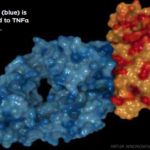By and large, that is exactly what generic drugs accomplish. In one study, the bioavailability of generic drugs was found to vary by 3.5% when compared with the bioavailability of the brand-name drug.2 This is approximately the same variability that is found when comparing two batches of the same drug from the same manufacturer. A meta-analysis of studies comparing generic drugs with brand-name drugs demonstrated no evidence that one was better than the other.3
The motivation for creating a generic drug, of course, is profit. When a pharmaceutical company initially brings a drug to market, it tries to recoup all of the costs of research and development that went into making that drug, as well as the anticipated costs of marketing and outreach. When a generic drug manufacturer comes along, it is coasting on the work of others, like a student who has cribbed the answers to a test.
In this particular case, theft is good. Patent protection exists to encourage innovation, but patents expire for a reason. The introduction of generic drugs into the marketplace moderates the overall costs of pharmaceuticals and ensures a drug that is initially prohibitively expensive will eventually be available to all.4
The Economics of Generics
The impact of generic drugs on healthcare economics cannot be overstated. Generic drugs now represent 89% of all prescriptions written in the U.S.; however, they account for only 27% of all spending on drugs.5 In the past decade, generic drugs have resulted in $1.67 trillion in savings.5 So why are generic drugs not more widely available?
Part of the problem may be the lack of raw materials. Creating a generic drug generally requires 1,500 to 3,000 doses of the branded drug. Some companies engage in what Scott Gottlieb, the FDA commissioner, recently labeled “shenanigans” to avoid releasing this quantity of drug to a competitor.6 This has gained the attention of the Federal Trade Commission (FTC), which seems odd until you realize the FTC is in charge of policing anticompetitive business practices.
Part of the problem may be the lack of raw interest. For some generic drugs, the profit margin is razor thin, and only a few companies may be interested in making the commitment. Problems in a single manufacturing plant can result in nationwide shortages.
Many of us first noticed how fragile our drug ecosystem is in the wake of Hurricane Maria in 2017. In the 1970s, the U.S. Congress made a change to the tax code, called Section 936, which made it advantageous for pharmaceutical companies to manufacture drugs in Puerto Rico. Although the incentive has since expired, Puerto Rico continues to be responsible for the production of 10% of all drugs prescribed in the U.S.7 The supply chains for intravenous saline and levothyroxine were both affected, which reminded all of us how important Puerto Rico is to the health of our nation.



